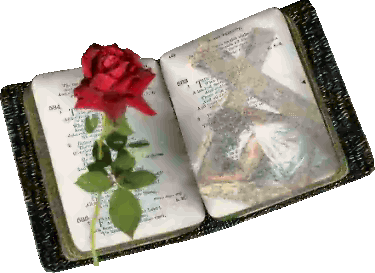Matthew 11:2-24
Lesson 21
Lesson 21
Read both the "King James Bible" and the "New Living Translation."
In this lesson:
In Matthew 3:13-15, we saw John the Baptist give witness to the true identity of Jesus.
Now languishing in prison, John has a crisis of faith.
In moments of doubt, remember Jesus' reply to John in verse 11:4-6.
Also, God will judge us (11:24).
John the Baptist in prison.
A 19th century print.
A 19th century print.
Study Tip:
Find the truth in each Bible passage.
Ponder what that truth means to you.
Determine how you can apply that truth into your life.
Find the truth in each Bible passage.
Ponder what that truth means to you.
Determine how you can apply that truth into your life.
Where was -
Chorazin -
A city located three miles north of Capernaum near the Sea of Galilee. Jesus performed many miracles here yet few from Chorazin followed Him. In Matthew 11:21 and Luke 10:13 we see Jesus scold the people of Chorazin for their lack of faith. The ruins of an ancient synagogue were excavated here over a century ago.
Bethsaida -
A small town in Galilee located on the north-east shore of the Sea of Galilee six miles east of Capernaum and the hometown of three disciples, Peter, Philip, and Andrew (John 1:44). Jesus visited Bethsaida often and performed many miracles there (Mark 8:22-25). It was while teaching near Bethsaida that Jesus miraculously fed five thousand people with just five loaves of bread and two fish (Matthew 14:15-21; Mark 6:35-44; Luke 9:10-17; John 6:5-13). Lost for almost two thousand years, archaeologists located Bethsaida's ruins in 1987.
Tyre -
A seaport city located on the east coast of the Mediterranean Sea thirty-five miles north-west of The Sea of Galilee (forty-seven miles north of Caesarea and twenty miles south of Sidon) and populated mostly by Gentiles. Tyre dates back to the twenty-eighth century B.C. and was called Tyrus in the Old Testament (Ezekiel 26:2). Described as a beautiful city (Ezekiel 27:4), Tyre was well known for its cedar trees (1 Chronicles 22:4), dye works, glassware, weaving, and other manufactured
goods. Isaiah 23:8 tells us that Tyre was a "crowning city, whose merchants are princes, whose traffickers are the honourable of the earth." Tyre supplied cedar wood, carpenters and masons to build the Temple in Jerusalem (2 Samuel 5:11; 1 Kings 5:2-10; 2 Chronicles 2:3). The city also had a reputation for wickedness, it turned against Israel and sold Hebrews into slavery (Joel 3:6-8). Tyre was destroyed by God in the Old Testament (Isaiah 23:1; Amos 1:9-10; Zechariah 9:3-4) but by Jesus' time the city had been rebuilt and boasted one of the busiest harbors in the eastern Mediterranean. Ezekiel 27:3 describes Tyre as being "situate at the entry of the sea, a merchant of the people for many isles." Shipping goods throughout the Roman empire made the city wealthy. Today, Tyre is called Sur and inhabited by just a few thousand residents. Tyre is mentioned extensively in Isaiah 23 and Ezekiel 26-28.
Sidon -
Sometimes called Zidon. Sidon was a seaport city (Ezekiel 27:8) located on the Mediterranean Sea twenty-five miles north of Tyre (south of modern-day Beirut, Lebanon) and a one day sail from Caesarea. Mentioned in Joshua 11:8 and 19:28 as a great city, Sidon was inhabited by Gentiles who had a history of oppressing Jews (Judges 10:12). In the Old Testament Sidon was destroyed by God due to its wickedness and pagan worship but by Jesus' day Sidon had recovered and was a thriving fishing town with prosperous glass and weaving shops and was famous for its art, commerce, and cedar trees (1 Kings 5:6 and 1 Chronicles 22:4). Today, Sidon is home to about 10,000 people and boasts many ancient ruins.
Chorazin -
A city located three miles north of Capernaum near the Sea of Galilee. Jesus performed many miracles here yet few from Chorazin followed Him. In Matthew 11:21 and Luke 10:13 we see Jesus scold the people of Chorazin for their lack of faith. The ruins of an ancient synagogue were excavated here over a century ago.
Bethsaida -
A small town in Galilee located on the north-east shore of the Sea of Galilee six miles east of Capernaum and the hometown of three disciples, Peter, Philip, and Andrew (John 1:44). Jesus visited Bethsaida often and performed many miracles there (Mark 8:22-25). It was while teaching near Bethsaida that Jesus miraculously fed five thousand people with just five loaves of bread and two fish (Matthew 14:15-21; Mark 6:35-44; Luke 9:10-17; John 6:5-13). Lost for almost two thousand years, archaeologists located Bethsaida's ruins in 1987.
Tyre -
A seaport city located on the east coast of the Mediterranean Sea thirty-five miles north-west of The Sea of Galilee (forty-seven miles north of Caesarea and twenty miles south of Sidon) and populated mostly by Gentiles. Tyre dates back to the twenty-eighth century B.C. and was called Tyrus in the Old Testament (Ezekiel 26:2). Described as a beautiful city (Ezekiel 27:4), Tyre was well known for its cedar trees (1 Chronicles 22:4), dye works, glassware, weaving, and other manufactured
goods. Isaiah 23:8 tells us that Tyre was a "crowning city, whose merchants are princes, whose traffickers are the honourable of the earth." Tyre supplied cedar wood, carpenters and masons to build the Temple in Jerusalem (2 Samuel 5:11; 1 Kings 5:2-10; 2 Chronicles 2:3). The city also had a reputation for wickedness, it turned against Israel and sold Hebrews into slavery (Joel 3:6-8). Tyre was destroyed by God in the Old Testament (Isaiah 23:1; Amos 1:9-10; Zechariah 9:3-4) but by Jesus' time the city had been rebuilt and boasted one of the busiest harbors in the eastern Mediterranean. Ezekiel 27:3 describes Tyre as being "situate at the entry of the sea, a merchant of the people for many isles." Shipping goods throughout the Roman empire made the city wealthy. Today, Tyre is called Sur and inhabited by just a few thousand residents. Tyre is mentioned extensively in Isaiah 23 and Ezekiel 26-28.
Sidon -
Sometimes called Zidon. Sidon was a seaport city (Ezekiel 27:8) located on the Mediterranean Sea twenty-five miles north of Tyre (south of modern-day Beirut, Lebanon) and a one day sail from Caesarea. Mentioned in Joshua 11:8 and 19:28 as a great city, Sidon was inhabited by Gentiles who had a history of oppressing Jews (Judges 10:12). In the Old Testament Sidon was destroyed by God due to its wickedness and pagan worship but by Jesus' day Sidon had recovered and was a thriving fishing town with prosperous glass and weaving shops and was famous for its art, commerce, and cedar trees (1 Kings 5:6 and 1 Chronicles 22:4). Today, Sidon is home to about 10,000 people and boasts many ancient ruins.






